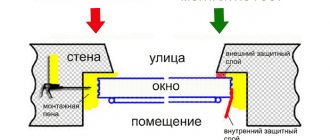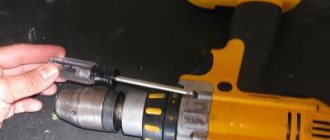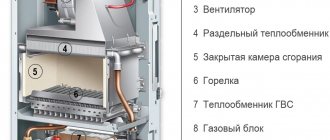Have you ever considered how much it costs to heat a sauna with gas? According to the most conservative estimates, compared to burning wood and electric heating, the savings are 40 percent. The cost reduction is especially noticeable if the bathhouse is large. Most often, this method is used by owners of gasified areas, since it is not difficult to supply gas to the bathhouse from home, and constantly changing cylinders is a labor-intensive undertaking.
Extension of the gas pipeline to the bathhouse must be carried out taking into account the requirements of the law. Already at the design stage, it is necessary to involve professionals, since special permission is required to launch. When issuing such permits, experts take into account the specifics of the project, the location of the bathhouse on the site, conditions for the safe placement of pipes, the origin of the equipment and much more.
To create an algorithm for competent gasification of a bathhouse, we familiarized ourselves with legislative acts, advice from gas workers, and user observations. The result was a detailed action plan that took into account all installation and operation rules.
Gas stove for a sauna or bath?
Time does not stand still: more and more lovers of steam baths understand not only the significant difference between the national baths of neighboring peoples, but also that the conditions of these baths are demanding in terms of heating equipment, room design and other components.
Hence the question: in which bathhouse would a gas stove be appropriate? And is it really contraindicated for someone else?
The answer to this is quite simple: gas is just fuel , and the material from which this stove is made will be of real importance for your bathhouse.
After all, it won’t be a big discovery for you that a gas burner can be placed not only in a metal oven, but also in a brick oven?
And a brick stove is the most optimal unit for a real Russian bath .
But not every brick stove is suitable for gas. What are the restrictions?
- The combustion part should not be too large, but the torch from the burner should not touch the stove material .
- A stove without a smoke circulation system is not suitable. A Dutch or Swedish design is suitable .
- Bell-type stoves are also not an option for switching to gas, because the gas combustion product will not be retained under the hood, it will be carried out into the chimney, and the hood’s task is to catch the heat. In this case, he won’t have time .
The least suitable for a Russian bath would be a metal stove without shielding . But with a good-quality brick screen, this is also a completely acceptable option.
As for the sauna , it requires fast and strong convection . Consequently, the best stoves will be those that have nothing stopping them from freely heating fresh air flowing through the ventilation from the street - this is either a metal stove without external decoration with an open heater, or the same stove in a mesh casing.
Gas as a fuel behaves quite controllably and predictably, if you do not violate the operating instructions. Therefore, you can get the specified conditions without surprises.
And for a better understanding, let's look at this:
Briefly about the main thing
When choosing from brick, ceramic and steel chimneys, you need to take into account the design of the stove and the type of bathhouse. If the stove is brick, the chimney can also be made of brick, taking care of a strong foundation. Ceramic structures are more suitable for baths with a residential attic or located in the basement of a house. The ideal choice for small one-story free-standing baths would be a single- or double-circuit prefabricated steel chimney. And the most budget option is a black steel pipe, but its installation will require welding work.
Ratings 0
Gas furnace device
What was said above already seemed to hint that a gas stove is not much different from a wood stove. And indeed: if you wish, you can remake your existing wood stove by installing a gas burner in it.
For your information! There are limitations, for example, it is better to install a micro-torch burner so that the metal does not burn out, you must ensure that the flame does not touch the walls and top.
An internal heater can also become a source of problems - flow-through or closed, it is not designed for a torch temperature of 1600 degrees.
Keep in mind! Even when the gas burns entirely in air, problems remain. After all, all the heat goes up, but the lower part does not heat up . Therefore, the steam room heats up unevenly, which means it takes longer.
By the way, the dimensions of the fuel compartment in an initially gas stove will still be smaller than in a wood stove, but this is understandable - the firewood is voluminous, so additional space in the firebox was allocated for it. But gas doesn’t need that much space. He only needs air.
IMPORTANT! But this is a really important point: for complete combustion, gas needs an influx of fresh, oxygen-saturated air . Because any combustion is oxidation, interaction with oxygen. If there is not enough of it, combustion will be incomplete, and incomplete products are dangerous for humans!
To better understand this issue, let's look at the structure of the main part of a gas sauna stove:
Gas burner device
Today there are two types of burners:
- atmospheric;
- supercharged.
Atmospheric
A cheap type of gas burner because it is designed quite simply. It is a tube or tubes through which one or another natural gas flows under pressure. Before it burns, it must be mixed with air, and the air in this type of burner is supplied only by draft. And if there is no proper ventilation, then it is better not to experiment with such burners.
Well, if you are sure that your ventilation is good, the draft will work properly, then the atmospheric burner will be good - it is silent and does not depend on electricity.
True, it depends on the movement of air in the room itself - this makes changes in the proportions of mixing gas and air. The result is uneven heating. And the efficiency suffers - a lot of heat literally goes into the pipe. In addition, gas combustion is often incomplete.
Supercharged
The second type differs significantly from the first in design. The point of the differences is to make the thrust uniform . This requires a fan, and therefore electricity.
As in an atmospheric burner, in a forced-air burner the gas must first be mixed with air. The fan is adjusted so that the ratio is optimal. When this is achieved, the dependence on air movement in the steam room disappears , and with it the unevenness in the formation of the mixture and its combustion.
It’s worth mentioning right away the advantages and disadvantages of blower or fans (yes, these are also options that are structurally the same thing). It is clear that dependence on electricity is difficult to classify as an advantage.
IMPORTANT! If someone has problems with electricity, then it is better to secure the gas furnace fan with an emergency power source.
The second, less important drawback is noise. The third is the cost, which is 2-3 times higher than the cost of an atmospheric burner. As for the latter, it’s worth calculating how quickly the choice will pay off, because a supercharged burner also has a big advantage: it is twice (!) more economical than an atmospheric one.
In addition, forced-air burners are normally installed in wood-burning stoves. But it’s up to the owner to decide, because converting a wood-burning stove to gas can significantly shorten its service life due to metal burnout.
One more advantage is worth mentioning: the ability to customize power.
operate from both main gas and liquefied gas . At the same time, the transition from one type to another is quite simple.
Video
For a better idea of the subject, watch the video, which clearly demonstrates the operation of a forced-air burner installed in a metal sauna stove.
As you can see, not everything is as simple with a gas stove as sellers say. Therefore, it is worth comparing the advantages of all existing types of stoves.
What should you pay attention to when installing a chimney in a bathhouse?
Below are guidelines on what to focus on first.
How to choose the size and shape of a chimney
The small cross-sectional size will prevent the removal of fuel products in the required quantity. The volumetric section, on the contrary, contributes to the movement of smoke too quickly, which will not allow the bathhouse room to be properly heated. This, in turn, will increase fuel costs. You should take this point seriously, since the result will depend on it.
Deciding on the form is easy if you take into account the basic principle of its operation. Chimneys tend to heat up unevenly, as a result of which smoke comes out to the roof surface along the central axis. It follows that the correct shape is a circle. Cylindrical structures heat the room much faster and do not require unnecessary financial costs.
A chimney with a rectangular cross-section provokes turbulence that interferes with the necessary draft. A rectangular configuration is permissible only when we are talking about heating devices that do not require powerful traction.
Pipe diameter
The scale is determined by the degree of power draft of the sauna stove and is located in the intermediate range from 115 to 270 (mm). However, in order to accurately determine the diameter, you need to familiarize yourself with some of the requirements specified by the manufacturer in the instructions. If you do not have a diagram for installing a chimney for a bathhouse with your own hands, then it will be enough to know the ratio of the cross-sectional diameters of different shapes. It looks like this:
- cylindrical – 1 to 10;
- rectangular - 1 to 1.5.
For brick chimneys, the minimum cross-sectional diameter should be 140x140 mm.
The successful operation of a chimney system primarily depends on how accurately the pipe size is determined.
Flue height
According to the standard, its height should be at least 5 meters. The calculation of the height of the chimney is carried out in accordance with the basic technical characteristics of the materials.
The channel should be located at least half a meter above the roof ridge and not below its level. In this case, it is worth taking into account the thickness of the roofing covering and the angle of inclination of the roof slope. The height is selected without taking into account the chimney “umbrella”.
Comparison of gas, wood and electric ovens
Disadvantages of gas
- Gas furnaces pose not only a fire hazard, but also an explosion hazard. Therefore, this is the only type of stove for which you need to obtain a permit .
- Since a gas stove can be either metal or brick, the issue of the foundation is decided solely depending on the weight of the entire structure, including the chimney.
- If the stove is metal, it will burn out sooner or later - with wood or gas. this will happen faster with .
- According to fire safety requirements, storage for gas cylinders must be a separate building.
- The permit implies not only an inspection of the equipment by a gas inspector, but also a bypass of various authorities .
Advantages of gas
- Easy power control. Despite the fact that the maximum efficiency is maintained even if the power is reduced to 3-5% of the nominal. Wood-burning ones cannot boast of anything like that.
- Precisely set temperature is a plus that electric sauna stoves also have, but wood-burning sauna stoves do not.
- Reducing the preparation time for the bath - after about forty minutes you can already let children and women in, and after another couple of hours the steam room comes into operation (!about steam room stoves here).
- Compared to wood-burning stoves: virtually no soot and soot , no preparatory work with fuel, higher stove efficiency.
- Compared to electric: gas is cheaper than electricity.
Disadvantages of wood-burning
- First of all , the time that needs to be spent getting the bathhouse up to speed is annoying. Depending on the furnace material, this can be either 4 or 6 hours. Metal ones, of course, will warm the steam room much faster, but this is an option for a sauna.
- Another big drawback is the dirt that comes with regular cleaning , from the ash pan to the chimney.
- It is also worth mentioning that the fuel has to be prepared first, because different brands of stoves consume logs of different lengths, so it’s not enough to chop the firewood; sometimes they also need to be cut into the required lengths.
Advantages of wood-burning
- Such a stove in a bathhouse is considered traditional, so the inconveniences associated with it are accepted as a continuation of its advantages. First of all, we are talking about fans of the Russian bath, who value a wood-burning brick or brick-trimmed stove as a source of uniform, soft heat, despite the fact that in a closed heater inside the stove the stones are heated to 400 degrees to produce light steam.
- Those who are more interested in “just washing”, of course, do not see the point in studying the intricacies of the art of the stoker and bathhouse attendant, but they are also able to evaluate a wood-burning stove as the least expensive both in purchasing and in supplying it with fuel.
Disadvantages of electric
- Of course, you don’t need to get permission for an electric one, like for a gas one, but if the stove is not the weakest, you will have to pull three phases to get 380 volts. A good electrician will explain whether 220 V can be used in a particular case or whether there are no options.
- It may be necessary to change the wiring to a thicker cable.
- The cost of electricity is the highest among other types of fuel.
- A rare electric stove is suitable for a Russian bath - it is either an expensive “thermos”, or a Russian invention with a steam generator hidden in an open heater.
- Do not pour too much water and wet the heating elements.
- Heating elements generally fail easily.
Advantages of electric
- An ideal stove for a sauna - everything in it is tailored for this sauna.
- Heats up quickly.
- Takes up little space.
- It does not require either a foundation or a chimney, and therefore at the construction stage you don’t have to think too much about where it will stand.
- If, after this list of advantages and disadvantages, you still decide that gas is more suitable for you than others, let’s look at what you need to focus on when choosing it.
Requirements
To talk about the pros and cons of a heating system, you must first determine what requirements it must satisfy.
And this:
- Safety.
- Economical.
- Ease of use.
- Warm-up speed.
Knowing the requirements listed above, you can see how gas sauna stoves meet these points.
Gas heater for a sauna: which one to choose?
There are several selection criteria, each of which is worth considering separately.
Power
Powerful gas stove for very large saunas
This is a parameter of heat release per hour of gas combustion. Power varies:
- nominal;
- minimal;
- maximum.
The last two determine the boundaries of stable operation of the burner while maintaining its safety. The rated power determines the maximum heat generation value during long-term operation . This takes into account excess air, which should be minimal, and incomplete combustion of fuel, which should remain within the prescribed limits.
The burner power is indicated in its passport . Our task is to calculate how much energy is needed to heat a particular steam room. Of course, there is a simple calculation for this with coefficients:
- calculate the volume of the room;
- We measure the area of surfaces without thermal insulation - windows, tiles, etc. We multiply their surface area by 1.2 and add the resulting figure to the volume of the room calculated above;
- in a log house without thermal insulation, the increasing coefficient for the entire volume is 1.5;
- if the door to the steam room is glass, add another one and a half cubic meters to the calculated figure.
Let's summarize what we got. The final figure is the number of kilowatts required to heat our premises. All that remains is to compare it with the numbers of the rated power of the burner you like.
By the way, in further calculations you can assume that a gas heater for a sauna with a power of 10 kW will burn 1 cubic meter of natural gas per hour or 0.85 kg of liquefied gas.
Burner type
Above we have already talked about what types of burners there are. It's time to choose the right one.
Let's start with the fact that cheaper atmospheric ones can only be installed in rooms with a volume of more than 12 cubic meters . This is due to the need to ensure sufficient air flow to the burner. Yes, and people should have something left to breathe).
Attention! The smaller the volume of the steam room, the more correct it is to use forced-air burner. In addition, it is more suitable for various types of existing stoves (if you convert wood to gas).
And if you intend to use wood from time to time, and not just gas, then atmospheric is not an option for you .
IMPORTANT! Since we often have low pressure in our networks , we should take into account that Western burners may simply not work at such pressure, which cannot be said about domestic ones, whose manufacturers are aware of the situation with pressure in the networks.
By the way, it is also worth mentioning that in addition to purely gas burners, there are also burners of the so-called “combined type”, which implies the ability to work on both gas and diesel fuel . If anyone has gas shortages, this is their option.
And now the most important thing: when choosing a gas burner, you need to look at whether it is specifically intended for sauna stoves or not. And it’s better if it’s still intended. Their difference is that they are longer than regular ones. This is done in order to place them in an extended (external) firebox. And the use of others in the case of a gas sauna stove is not recommended.
IMPORTANT! A gas stove in a bathhouse should be heated exclusively from the dressing room!
Automation
Automation in a gas furnace is designed not only to simplify its management, but also to ensure the safety of people in the room (not to mention the safety of the room itself). Therefore, you should not neglect it.
What kind of automation can be purchased for which burners?
Atmospheric burners are the simplest, but they can also be equipped with oxygen concentration sensors, which can independently turn off the gas supply if it drops too much. This will protect people from the products of incomplete combustion of gas.
Useful video
But this video shows not only how to ignite an atmospheric burner, but also how the device works to shut off the gas when the flame goes out.
Pressurized have more automation: it is responsible for turning off the gas in cases of a decrease in its pressure in the network, a power outage or the flame going out.
Also, all gas furnaces are equipped with thermostats that maintain the set temperature.
These devices also belong to the automation we are considering.
Safety is the main rule
Like any gas-powered device, sauna devices must also be installed taking into account certain precautions. Their compliance must be mandatory.
Basic safety precautions include the following:
- The gap between the heater and the wall is at least 500 mm
- The base on which the stove is installed protrudes 100 mm from the device along the entire perimeter
- The burner hole has dimensions: width – 350-450 mm, and height – 470-550 mm
Nuances to consider before installing a gas stove
We have not touched upon the topic of making a gas oven yourself for one simple reason:
IMPORTANT! Homemade gas stoves and gas burners are not certified ; they are prohibited for use by law . In case of violation, you will have to pay fines.
The only thing in your power is to buy a ready-made burner and prepare the stove for gasification. Compliance with the following standards should be checked:
- the firebox must (!) go into the dressing room, and the firebox opening is finished with iron;
- dimensions of the firebox opening: 47-55 cm in height, 35-45 cm in width, and if together with a metal frame, then 61-68 and 51-66 cm, respectively;
- The minimum room volume for installing a gas stove is 8 cubic meters. (Remember, yes, that atmospheric ones are installed with a volume of at least 12 cubic meters);
- the height of the room cannot be less than 2.2 m;
- It is necessary to have a window with an area of 0.6 sq. meter, a gap under the door to the steam room from 4 cm or a ventilation grille;
- the refractory material under the stove must be at least 10 cm wider than the dimensions of the stove on each side;
- combustible walls should not be closer than half a meter to the heating device.
IMPORTANT! All work related to gasification is carried out by professionals .
Is it possible to install a sandwich chimney in a bathhouse with your own hands?
The use of this design allows you to prevent and protect the room from possible fires. Thanks to the insulation, the heating temperature of the pipe usually does not rise.
There is a certain sequence that accompanies proper self-assembly. Strict compliance with the rules and recommendations of the manufacturer, guaranteeing the uninterrupted operation of the chimney system.
Documents that need to be completed to operate a gas sauna stove
fire certificate for gas stove
The first document that you must have is a certificate for the purchased equipment: burner or stove . Anything purchased in a store already has such a certificate.
Another important thing is this: the delivery package of the burner may include a hose with a reducer and other parts for connecting to bottled gas, which, if desired, can be purchased separately, but you need to know that if purchased separately, each part will need a certificate. This will complicate the permitting process.
When the equipment is installed but not yet connected, you need to call an inspector for an inspection . He should check everything and, if necessary, point out what needs to be corrected. After receiving the inspection result, a bypass of other authorities begins, the result of which will be obtaining a permit to operate the stove, which is issued by Rostekhnadzor.
The requirements for naturally aspirated models are stricter than for supercharged ones. In addition to fire safety measures and chimney insulation, as well as the presence of a spark arrestor at the end of the pipe, which applies to any type of burner, the draft and ventilation device will be checked.
Design features of a chimney for a steam room
- The chimney is a vertical structure mounted inside the bathhouse or on the facade of the building. Its main task is to remove fuel combustion products at a speed sufficient to maintain natural draft in the furnace.
- A well-designed design ensures quick heating of the bath, maintaining the necessary microclimate in the steam room and economical fuel consumption.
- The most common problems with smoke exhaust ducts: Extremely strong draft, which will lead to rapid burning of fuel without adequate heating of the steam room. Traction too weak. An inadequate amount of oxygen enters the firebox, as a result of which the combustion process is interrupted, and then the thermal conductivity of the stove decreases.
- Proper installation of the chimney is a guarantee of your own safety and the longest possible service life.
The most famous Russian companies producing gas furnaces
We are not interested in promoting any of the manufacturers, so we simply inform you that the Russian enterprises Teplodar and Termofor have ready-made gas stoves:
"Teplodar"
Stoves “Taman”, “Rus”, “New Rus”, “Laguna”, “Sibir”, “Sahara”, “Sibirsky Utes” have not only wood-burning, but also gas modifications. Some models from these lines are considered separately: Laguna-12 TK, Rus 9 LU, Rus 12 L, Sahara 24 LC.
"Termofor"
The Termofor company also has a couple of stoves with gas equipment. “Taimyr” is also on the site.
*** Well, if you are not afraid of the hassle of paperwork, a gas stove can really save a lot of work and money (this will come later, but at first you will have to spend a lot of money). But do not forget about the main thing - safety , because today we have all the means to prevent a household gas explosion.
Conclusions and useful video on the topic
Having collected information on how to properly supply gas to a bathhouse, we found out that the law imposes strict requirements on the design, equipment parameters and installation conditions of the gas pipeline. Independent design and connection is prohibited. Therefore, from the moment the idea is conceived, it is worth getting advice from professionals.
In the video, a representative of one of the gas companies explains how to obtain permission to gasify residential and non-residential premises, lists the main stages and necessary documents:
If your bathhouse is already gasified and you have something to share with other owners of country estates, we invite you to participate in the discussion. In the form below you can ask questions, talk about your experience, and comment on key points. Take the chance to get useful information!
How to obtain permission to install equipment
Before starting the construction of a gas-heated bathhouse, it is necessary to check with the relevant services about the possibility of connecting the facility to the gas network. It is made on the basis of an application. Gas services, based on the power of the equipment planned for installation in the baths, calculate the maximum gas consumption m.cub./hour.
Based on this calculation and safety requirements, they develop technical conditions for connecting gas to the facility and issue its passport. After obtaining permission to connect gas, work is carried out by specialized organizations. At the same time, the bathhouse room to which gas is supplied must comply with the requirements of SNiP 2.04.08-87.











